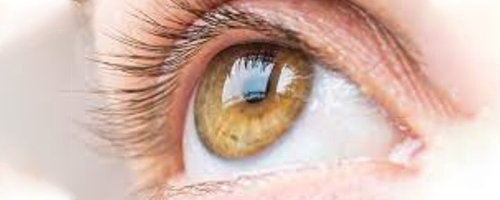
Cornea
It is responsible for more than 2/3rd of the eye’s focusing power. Unlike most tissues in the body, the cornea contains no blood vessels to nourish or protect it against infection.
Instead, the cornea receives its nourishment from the tears and aqueous humor that fills the chamber behind it.
To see well, all layers of the cornea must be free of any cloudy or opaque areas. When cornea becomes cloudy due to disease, injury, infection or malnutrition, vision is significantly lost or reduced.

Specialized Cornea Services

1. Corneal Transplantation
One of the standout services provided by EYEQUEST Eye Care is corneal transplantation. This procedure is a ray of hope for individuals suffering from severe corneal diseases or injuries.

2. Corneal Cross-Linking
Corneal cross-linking is an innovative treatment that can halt the progression of conditions like keratoconus. EYEQUEST Eye Care offers this advanced procedure, helping patients maintain their corneal integrity and visual clarity.

3. Corneal Infections Treatment
Corneal infections can be painful and detrimental to your vision. The experts at EYEQUEST Eye Care are well-versed in diagnosing and treating corneal infections promptly, preventing further complications.

4. Corneal Topography
Precise diagnosis is the foundation of effective treatment. EYEQUEST Eye Care utilizes cutting-edge corneal topography technology to map the curvature of your cornea accurately. This information aids in customizing treatment plans for each patient.
Corneal blindness is the fourth leading cause of blindness in India. Treating corneal blindness is possible through cornea transplant. In this treatment, a healthy cornea is transplanted in place of a diseased cornea in entirety through (penetrating keratoplasty) or in part (lamellar keratoplasty). Since artificial corneas are not available, corneas have to be harvested only through eye donation. Dr. Abhishek Dave is a fellowship trained expert cornea surgeon specializing in most advanced corneal transplants in Delhi/ NCR.
Various Corneal Diseases We Treat at Eyequest Eye Care
Refractive errors: If the cornea is flatter than normal or the eye is short, rays of light are focused behind the retina and causes hyperopia or farsightedness where close objects appear blurred.
Astigmatism is a condition in which the uneven curvature of the cornea blurs and distorts both distant and near objects. The cornea is more curved in one direction than in the other. This causes the rays of light to focus on two separate areas of the retina, distorting the visual image.
Refractive errors are usually corrected by eye glasses or contact lenses. Although these are safe and effective methods for treating refractive errors, refractive surgeries are becoming an increasingly popular option.
Allergies: Allergies affecting the eye are relatively common. They are most commonly related to pollen and dust in the air. They are usually immediate or delayed hypersensitivity reactions. Symptoms can include redness, itching, and burning, tearing, stinging and watery discharge. An increasing number of eye allergy cases are related to medications and contact lens wear.
Conjunctivitis (red / pink eye): Conjunctiva is a translucent mucous membrane which lines the posterior surface of the eyelids and anterior aspect of the eyeball. A group of diseases that cause swelling, itching, burning and redness of the conjunctiva are termed as conjunctivitis. It is an inflammation of the conjunctiva associated with a discharge which may be watery, mucoid, mucopurulent or purulent. It can spread from one person to another if proper precautions are not taken.
Corneal Infections (Corneal Ulcer): A breach in the normal epithelial surface of the cornea associated with necrosis of surrounding corneal tissue is termed as corneal ulceration. Two main factors are responsible in the production of a corneal ulcer: damage to corneal epithelium and infection of the eroded area. They usually cause pain, redness, watering,
discharge, photophobia i.e., intolerance to light and blurred vision. It can be caused by bacteria, fungi, viruses, acanthamoeba and many other organisms. Eyequest Eye Care is fully equipped for treatment of corneal ulcers at Mayur Vihar, Delhi.
Dry Eye: Dry eye can be caused due to any of the following reasons:
- Aqueous tear deficiency
- Mucin deficiency
- Lipid deficiency
- Impaired eyelid function
- Corneal epithelium abnormalities
Corneal Dystrophies: Corneal dystrophies affect vision in widely differing ways. Some cause severe visual impairment, while a few cause no vision problems and are discovered during a routine eye examination. Other dystrophies may cause repeated episodes of pain without leading to permanent loss of vision. Dr. Abhishek Dave is trained from the best institutions in India & USA to treat such corneal conditions with keratoplasty (corneal transplant).
Keratoconus: Keratoconus is characterized by progressive thinning and ectasia which results in deterioration of the quality of vision and also the quality of life. A new modality of treatment, based on collagen crosslinking with the help of Ultraviolet A (UVA, 365nm) and the photosensitizer riboflavin phosphate has been described which changes the intrinsic biomechanical properties of the cornea, increasing its strength by almost 300%.
Pterygium: Pterygia are more common in sunny climates and in the 20-40 age group. Scientists do not know what causes pterygia to develop. However, since people who have pterygia usually have spent a significant time outdoors, many doctors believe ultraviolet (UV) light from the sun may be a factor. In areas where sunlight is strong, wearing protective eyeglasses, sunglasses, and/or hats with brims are suggested. While some studies report a higher prevalence of pterygia in men than in women, this may reflect different rates of exposure to UV light. Eyequest Eye Care is fully equipped to undertake Pterygium Surgery in Delhi/NCR.
Ocular Surface Diseases: Patients with ocular surface diseases suffer from loss of vision, discomfort, infection, erosions, ulceration, and destruction with scarring of the eye surface. The most common cause of these problems is the imbalance in the neural regulation which leads to an “unstable tear film”. Ocular surface failure manifests in two ways – the first one is the Limbal Stem Cell Deficiency in which the corneal epithelium is replaced by the conjunctival epithelium. In the second one, the corneal or the conjunctival epithelium changes with keratinisation and loss of mucosal epithelial characteristics.
Contact lens related problems: A contact lens wearer who presents with conjunctival irritation and associated symptoms – such as itching, burning or tearing – may be suffering from any one of a number of conditions (such as allergy) of which the lenses may not be the primary cause. In other cases, however, contact lens wear itself is responsible for the condition.
Aphakic /Pseudophakic bullous keratopathy: This is a known adverse effect of cataract surgery in some people who have week corneal endothelial layer. Early cases can be treated by medicines. But advanced cases need corneal transplant of the specific endothelial layer called as DSAEK/DMEK. Dr. Abhishek Dave is fellowship trained from Sankara Nethralaya, Chennai and UCLA, USA in such delicate transplant surgeries.
Cornea Transplants at Eyequest Eyecare
A cornea transplant replaces diseased or scarred corneal tissue with healthy tissue from an organ donor.
There are two main types of cornea transplants: traditional, full thickness cornea transplant (also known as penetrating keratoplasty, or PK) and back layer cornea transplant (also known as endothelial keratoplasty, or EK).
A graft replaces central corneal tissue, damaged due to disease or eye injury, with healthy corneal tissue donated from a local eye bank. An unhealthy cornea affects your vision by scattering or distorting light and causing glare and blurred vision. A cornea transplant may be necessary to restore your functional vision.
Corneal eye disease is the fourth most common cause of blindness (after cataracts, glaucoma and age-related macular degeneration) and affects more than 10 million people worldwide.
When Do You Need A Cornea Transplant?
A healthy, clear cornea is essential for good vision. If your cornea is damaged due to eye disease or eye injury, it can become swollen, scarred or severely misshapen and distort your vision.
A cornea transplant may be necessary if eyeglasses or contact lenses can’t restore your functional vision, or if painful swelling can’t be relieved by medications or special contact lenses.
Certain conditions can affect the clarity of your cornea and put you at greater risk of corneal failure. These include:
- Scarring from infections, such as eye herpes or fungal keratitis.
- Scarring from trichiasis, when eyelashes grow inwardly, toward the eye, and rub against the cornea.
- Hereditary conditions such as Fuchs’ dystrophy.
- Eye diseases such as advanced keratoconus.
- Thinning of the cornea and irregular corneal shape (such as with keratoconus).
- Rare complications from LASIK surgery.
- Chemical burns of the cornea or damage from an eye injury.
- Excessive swelling (edema) of the cornea.
- Graft rejection following a previous corneal transplant.
- Corneal failure due to cataract surgery complications.
Recovering From A Cornea Transplant
Total cornea transplant recovery time can be up to a year or longer. Initially, your vision will be blurry for the first few months — and in some cases may be worse than it was before — while your eye gets used to its new cornea.
As your vision improves, you gradually will be able to return to your normal daily activities. For the first several weeks, heavy exercise and lifting are prohibited. However, you should be able to return to work within a week after surgery, depending on your job and how quickly your vision improves.
Steroid eye drops will be prescribed for several months to help your body accept the new corneal graft, as well as other medications to help control infection, discomfort and swelling. You should keep your eye protected at all times by wearing a shield or a pair of eyeglasses so that nothing inadvertently bumps or enters your eye.
If stitches were used in your surgery, they usually are removed 6-12 months post-surgery, depending on the health of your eye and the rate of healing. Adjustments can be made to the sutures surrounding the new corneal tissue to help reduce the amount of astigmatism resulting from an irregular eye surface.
As with any type of surgery, always follow the instructions of your eye surgeon to help minimize corneal transplant complications and expedite healing.
Deep Anterior Lamellar Keratoplasty
With advancement in corneal surgical techniques, it is now possible to selectively remove the anterior layers from the cornea and replace it with donor tissue to restore its anatomy and function
DALK is one such procedure wherein the host corneal endothelium is retained, and superficial corneal tissue is replaced with normal thickness donor tissue. As the host endothelium is retained there is minimum risk of rejection. Femtosecond assisted DALK is the most advanced form of anterior lamellar corneal transplantation which is also available at our centre.
DALK can be performed in Corneal ectatic disorders like Keratoconus, Post LASIK Ectasia, Pellucid marginal corneal degeneration (PMCD). The bulged-out cornea (forward bending making it a conical shape) in these disorders makes the focus in patient eye distorted and blurry. In this surgery, only front layers of cornea (stroma) is first cut with advanced corneal trephines and later dissected using special techniques and instruments. After this, same layers from a donated cornea is procured and then transplanted over patient’s eye. The ectatic or bulged out cornea is hence replaced by healthy cornea with appropriate shape. Use of Femtosecond laser in this surgery helps in avoiding use of trephine and various blades making it very accurate with diameter and depth of corneal layer transplantation. There is almost negligible risk of graft rejection and failure in this technique of cornea transplantation (Keratoplasty). DALK is performed with perfection at Eyequest Eye Care in East Delhi, Delhi/NCR.
Descemet's Stripping Endothelial Keratoplasty
This surgery is performed in case of damaged corneal endothelial cells. Pseudophakic bullous keratopathy, Aphakic bullous keratopathy, Fuch’s Dystrophy, Congenital Hereditary Endothelial Dystrophy (CHED) etc. In this surgery only damaged endothelial cells are replaced with healthy donor endothelium. Eyequest Eye Care is the best centre in East Delhi for corneal transplants.
